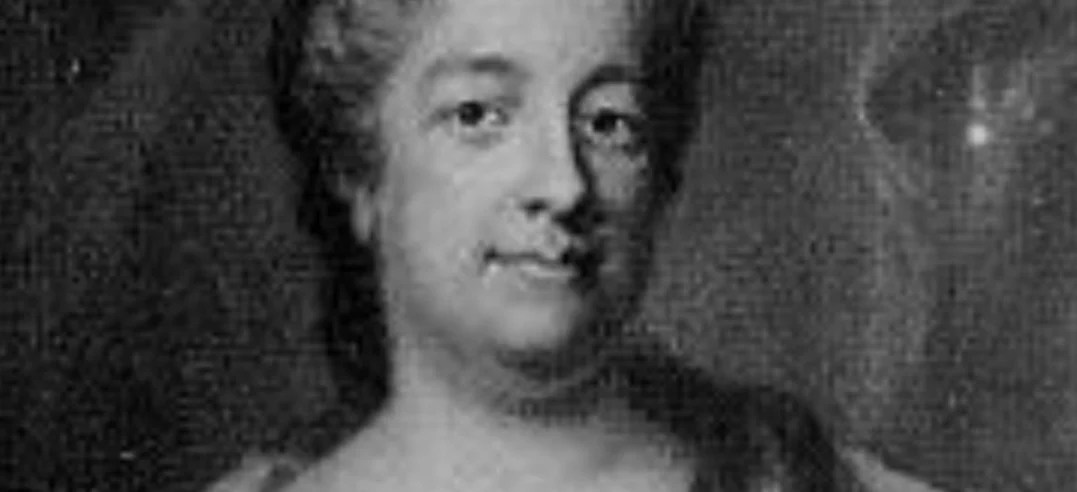If Eva Ekeblad is a name that you’re coming across for the first time, you probably aren’t alone. But that doesn’t mean she isn’t worth learning about!
Videos by Rare
Here are 10 facts about the Swedish Aristocrat, who discovered a new way to reinvent the potato while also hosting cultural salon parties.
She was of noble blood:
Born in 1724, Countess Eva Ekenblad’s full title was Eva De La Gardie. She was born into Swedish Nobility as a countess. Her father was statesman Count Magnus Julius De la Gardie was a count, and mother, Hedvig Catharina Lilje, worked as a salon hostess. Her family consisted of 9 brothers and 4 sisters. Her siblings are also known for their works. She helped ended witch hunts in Sweden with her research.
She discovered multiple new ways of using the potato:
Ekeblad is known for being a Swedish scientist. Eva Ekeblad’s potato discovery changed the purpose of the potato. Before her works, potatoes were primarily used to feed livestock. With her newly discovered knowledge, an increase in wheat production, barley, and rye occurred since potatoes could be used for other purposes. The purposes included flour, vodka alcohol consumption (vodka), contemporary consumption, and, eventually, perfume.
Eva was the first woman in the Royal Swedish Academy of Sciences:
When Eva Ekeblad figured out how to make vodka and flour form a potato, the Royal Swedish Academy of Sciences elected her to be an honorary member. At the age of only 24, she received this honor. Also, she was the first female member. But there was a catch. Unfortunately, being a ‘full member’ of the Royal Swedish Academy of Sciences was for men only at the time. She did, for a few years, have a full membership.
Eva married young:
Like many women at the time, the Countess married young at the age of 16. She married a nobleman named Count Claes Claesson Ekeblad. When she married, her father gave them the Västergötland, Mariedal Castle, and Lindholmen Castle. Eva Ekeblad and Count Claes Ekeblad had 7 children; 1 son and 6 daughters. As Eva did her experiments and research on potatoes, she was mothering her children. Her sister-in-law, Charlotta, also contributed to scientific exploration; she was responsible for the smallpox vaccination!
She couldn’t stop learning {about the potato}:
Not only did Eva help make the potato a staple food, but Ekeblad also discovered to bleach cotton textile and yarn with soap in 1751. Around 1752, Eva repurposed potato flour to reduce harsh chemicals in cosmetic products (wigs).
She dabbled in real estate:
In addition to being a mom and heavily researching the potato, Eva regularly managed 3 estates as her countess duties required of her. One of their family manors, Stola Manor Estate, was gifted to Eva Ekeblad’s daughter-in-law, shortly after her son Claes Julius Ekeblad, married her.
Eva Ekeblad had a great reputation:
Eva Ekeblad was revered highly amongst those she knew. A fellow high-ranking lady, the Spanish Ambassador’s wife, ‘De marquis de Puentefuerte’ said she was “one of few aristocratic ladies whose honor was considered untainted.” She was also said to be a very kind noblewoman.
She lived a high profile life:
Eva Ekeblad was born in Stockholm, Sweden, in 1724 Eva De La Gardie and later became friends with the queen Louisa Ulrika of Sweden. She is related to the creator of a vaccine for smallpox. Her sister-in-law created the vaccine that put an end to Sweden’s witch trial in Dalarna, 1758. She also served as a witness at the birth of Gustav IV Adolf of Sweden, as a member of the parliament.
She Hosted Salons:
Given the status of her family, it wasn’t uncommon for them to host events and parties. At the time, they were called or “salons,” Growing up, Eva’s mother hosted salons, surely where she learned the skill. The parties consisted of men and women gathering, often to discuss intellectual topics. This practice, particularly in France, helped neutralize the gap between women and men societally. In her adult years, Eva came to be a salonist, as the salon hosts were called. These events were heavily attended by nobility in the 17th and 18th centuries.
She Retired In The Country:
She was offered the chief lady-in-waiting role, överhovmästarinna, to the queen succeeding Ulrika Stromfelt and a royal governess. Both of these positions, she ended up turning down. As her health was failing and she needed to rest. Eva Ekeblad moved to the countryside in 1771, after the death of her husband. She lived on one of her personal estates, Mariedal, in Sweden. She lived at the Mariedal for six years before passing away in May 1786 due to illness.
She’s been honored with a Google Doodle:
As a nod in her honor, on what would have been her 293rd birthday, Eva Ekeblad was honored with a Google Doodle in 2017. Her likeness is carved into a potato, and the letters for “Google” are spelled in potato carvings!



